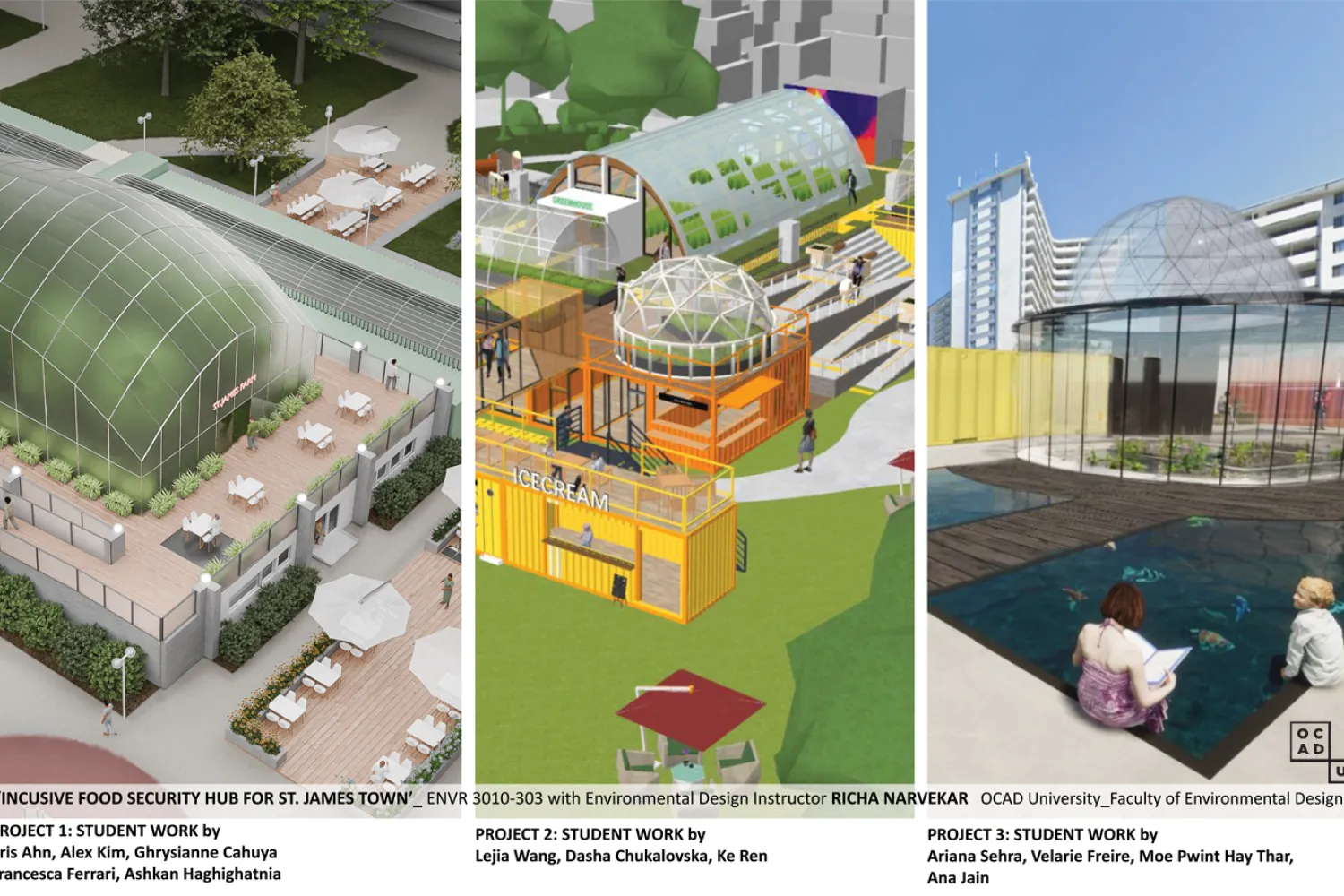Open Studio 2026 Printmaking Residency
The RBC Centre for Emerging Artists & Designers is excited to announce the Open Studio Printmaking Residency Career Launcher for OCAD U students.

Having students engage with design challenges in the real world is a priority for OCAD University Faculty of Design Sessional Instructor, Richa Narvekar.
Narvekar, who is resident of the St. James Town neighbourhood in Toronto and a member of the St. James Town food co-op, recently led a ‘live’ class assignment for ENVR3010—Design: Inclusion and Well Being, where her students designed an ‘Inclusive Food Security Hub’ showing adaptive reuse of a defunct pool, which is slated for demolition.
Students reimagined the unused pool space in St. James Town as a new Aquaponics centre, with an urban proposal for the surrounding neighbourhood showing features such as urban rooftop farming, inclusive furniture, a community food granary and a community kitchen and dining and an office for the St. James Town co-op, using shipping containers.
St. James Town is a densely populated neighbourhood, and a dense population can result in a lack of food and rising hunger. The St. James Town co-op is a co-operative nonprofit, comprised of residents of the area. Their project, the OASIS food hub aims to address food security in the area.
“St. James Town contains a lot of Toronto Community Housing and people from several marginalised groups, many of whom suffer serious mental health issues and deal with poverty and crime,” says Narvekar. “Seeing a derelict area in their neighbourhood visualized as a centre of abundance allows the community residents themselves to have renewed hope.”
Narvekar says that if the plans to turn the derelict pool into an Aquaponics centre were realized, the project would transform the community into a vibrant urban food growing centre that could benefit the whole city.
“Bringing budding environmental designers with strong visualization skills to work on a community project will bring the right people to notice this community, bring it the attention, and aid it needs,” says Narvekar. “It may help the City recognize the potentials inherent in St. James town, a community that is often overlooked .”
Narvekar notes that her students have benefitted immensely from the real-world project, understanding how environmental designers have agency and power to address important issues around them and do not have to be resigned to creating luxury condo commodities.
They have gained design, communication and software skills to address a tangible issue; and understanding the importance of adaptive re-use and how that can be a more sustainable way to work in urban environments than costly and environmentally damaging demolition and rebuilding.
“It is the hope of the co-op that the City can see the potential in the adaptive re-use of the pool, through the visuals created by students and invest time and effort to realize these plans instead of demolishing the pool,” she says.
Narvekar is currently working with the co-op to design a new urban farming site—an all-weather greenhouse in the area.